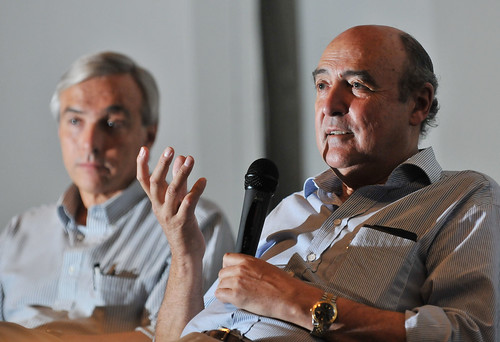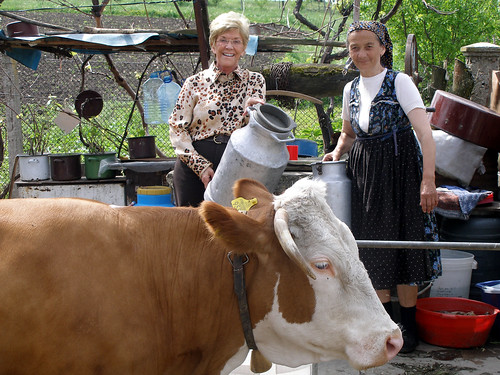At the chicken market in Xining, Lanzhou Province, China (photo on Flickr by Padmanaba01).
By Matthew Davis
The initial news reports were slim on details but the reaction was swift. There were at least three people dead in China after apparently contracting influenza from birds. Prices of soybean—a major ingredient in livestock feed—immediately took a dive.
Then the death toll rose to five, virus samples were detected in pigeons, and in Shanghai authorities began slaughtering poultry flocks. Within a few days the death count was up to seven, then nine. And people started to wonder about a connection to all those pig carcasses floating down Shanghai waterways.
Such is the confusing swirl of information emanating from the latest incident in which a worrisome disease has passed from animal to human, a phenomena—and a quite common one at that—known as zoonoses. In this instance, it’s an influenza virus called H7N9 that appears to have originated in wild or domestic bird populations, but much about its source remains murky.
For Delia Grace, a veterinary epidemiologist at the International Livestock Research Institute (ILRI) who spends most of her waking hours studying zoonotic events around the world, there are two essential facts to keep in mind as the situation in China evolves. And they embody how difficult it can be to craft a proper response.
One: the vast majority of zoonoses outbreaks do not escalate to crisis proportions. But, two: every now and then, as happened with Spanish flu in 1918 and AIDS in more recent times, an animal disease jumps to human hosts and causes a ‘civilization altering event’.
Grace suggests the appropriate reaction is to ‘panic slowly’. In other words, be prepared to move quickly if things get worse, but don’t over-react to the early reports. Also, keep in mind that, just based on what gets reported, a new disease emerges somewhere in the world about every four months.
For example, Grace noted that epidemiologists in the United Kingdom, Germany, and the Middle East are probably more concerned right now about a new and deadly corona virus that as of late March had killed 11 of the 17 people known to have been infected. There is evidence that at least one of the infections may have originated in racing camels.
Grace advises decision-makers in the public and private sector to channel the impulse to take action toward addressing conditions that are intensifying zoonotic threats.
We know that in certain parts of the world, livestock intensification is being pushed well beyond the limits of anything we have done in agriculture in the past’, she said. ‘There are hundreds of thousands of animals packed together and little transparency about how they are being managed. And that’s making disease experts pretty nervous.’
But Grace cautions against focusing solely on the risks posed by certain livestock practices and ignoring the fact that livestock are a major source of food and income for 1 billion of the world’s poorest people. She worries that misguided reactions to emerging zoonotic diseases can end up doing significant harm to their lives and livelihoods.
For example, in 2009, the Egyptian government ordered the mass slaughter of pigs tended by Coptic Christians on the mistaken belief that the pigs were linked to the H1N1 flu pandemic. Also, the possible link in Asia between a different, and also deadly, form of avian influenza called H5N1 and ‘backyard’ poultry farming has prompted a shift to more industrial-scale production. Yet, as Grace points out, given the problems plaguing industrial operations in the region, this shift could actually increase the risk of zoonotic diseases while imperiling the food security of livestock keepers.
‘The proper reaction to the risks posed by emerging zoonotic diseases is not to indiscriminately slaughter animals. That could threaten the health of far more people by depriving them of their primary source of protein and other nutrients’, Grace said.
What we need to do is look at the many ways livestock production has gone wrong—lack of diversity in animals, using drugs to mask signs of diseases, dirty conditions—and put them to right.
Matthew Davis is a Washington DC-based science writer and policy analyst; he also serves as a senior consulting writer for Burness Communications.







 This post is part of a series associated with the ILRI Annual Program Meeting in Addis Ababa, April 2010.
This post is part of a series associated with the ILRI Annual Program Meeting in Addis Ababa, April 2010.